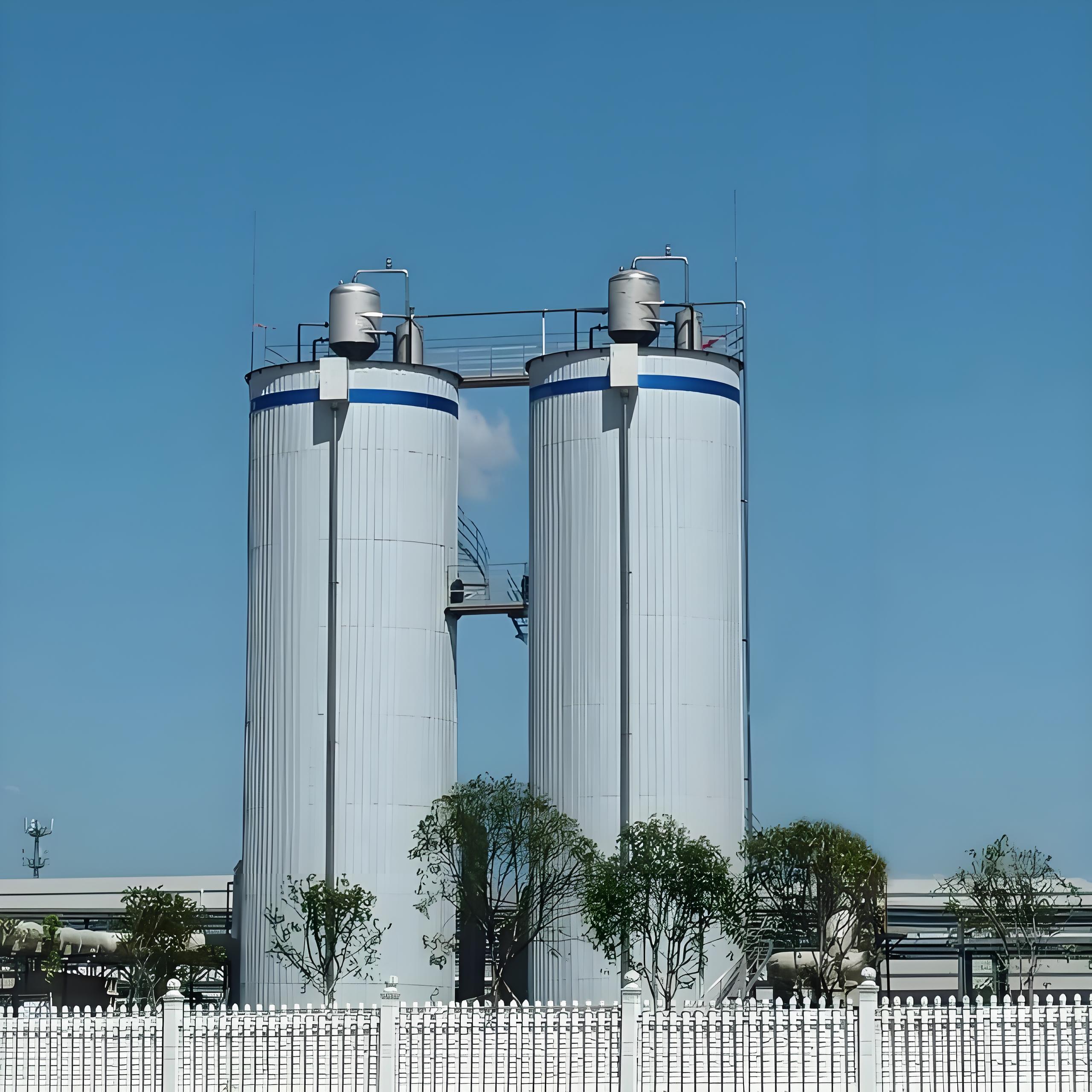
Anaerobic reactor is a biological treatment equipment that uses anaerobic microorganisms to decompose organic matter and produce biogas (mainly composed of methane and carbon dioxide) in an anaerobic environment. It is widely used in high concentration organic wastewater treatment, energy recovery, and environmental protection fields.
1、 Core principles and processing flow
Anaerobic reactors convert organic matter into biogas through a three-stage metabolic process of anaerobic microorganisms, including hydrolysis acidification, hydrogen production, acetic acid production, and methane production. Typical equipment such as UASB (Upflow Anaerobic Sludge Bed) uses a bottom water distribution system to ensure full contact between sewage and sludge. Microorganisms decompose organic matter to produce biogas, which drives the sludge and water to mix and rise to the three-phase separator. The separator separates gas (biogas), liquid (treated water), and solid (sludge). The biogas is discharged through a conduit, the sludge settles back into the reaction zone, and the treated water is discharged from the overflow weir. This process achieves efficient degradation and resource utilization of organic matter.
2、 Common types and technical characteristics
UASB (Upflow Anaerobic Sludge Bed)
Structure: Composed of a sludge reaction zone, a three-phase separator, and an air chamber, the bottom water distribution system ensures uniform water inflow.
Advantages: High treatment efficiency, long sludge retention time, suitable for high concentration organic wastewater (such as alcohol wastewater, papermaking wastewater).
Limitations: Sensitive to water quality fluctuations, suspended solids in the influent must be below 100mg/L.
EGSB (Expanded Granular Sludge Bed)
Improvement: By increasing the upward flow rate, the granular sludge is expanded to enhance mass transfer efficiency.
Features: High aspect ratio (3-5), high treatment efficiency, suitable for low to medium concentration organic wastewater.
Challenge: High operational requirements and high investment costs.
IC (Internal Circulation Anaerobic Reactor)
Structure: Composed of two layers of UASB connected in series, utilizing biogas to enhance internal circulation.
Advantages: Strengthening the combination of pre-processing and precision processing, high volumetric load rate, and small footprint.
Application: Treatment of high concentration organic wastewater (such as food processing wastewater).
CSTR (Fully Mixed Anaerobic Reactor)
Principle: By stirring, the raw materials are completely mixed with microorganisms, suitable for low concentration wastewater.
Characteristics: Simple structure, stable operation, but short sludge retention time and low treatment efficiency.
3、 Technical advantages
Efficient degradation of organic matter: Anaerobic reactors have a higher volumetric load than aerobic methods, resulting in higher removal of organic matter per unit volume.
Energy recovery: The generated biogas can be used for power generation or heating, reducing operating costs.
Low sludge production: The remaining sludge volume is only 1/10-1/6 of the aerobic method, and it has good dewatering performance and is easy to treat.
Low nutritional requirements: The demand for nitrogen and phosphorus is much lower than that of aerobic methods, making it suitable for nutrient deficient wastewater.
Strong adaptability: It can treat high concentration organic wastewater, and bacterial strains (such as granular sludge) can retain their activity when water supply is interrupted.
4、 Typical application scenarios
Industrial wastewater treatment: high concentration organic wastewater such as citric acid wastewater, alcohol wastewater, starch wastewater, papermaking wastewater, etc.
Agriculture and food waste treatment: Agricultural waste and food processing waste are converted into biogas through anaerobic digestion to achieve resource utilization.
Landfill site: Collect landfill gas (methane and carbon dioxide) and convert it into energy to reduce greenhouse gas emissions.
Environmental remediation: such as soil pollution control, by controlling anaerobic microorganisms to degrade organic pollutants.
5、 Technological challenges and development directions
Sensitive to water quality fluctuations: Sudden changes in inlet water quality and load may affect treatment effectiveness, and real-time monitoring and automatic control need to be strengthened.
Short flow and sludge loss: Some reactors (such as UASB) have short flow phenomena, and the design needs to be optimized to reduce sludge loss.
High suspended solids wastewater treatment: The inflow suspended solids need to be strictly controlled, otherwise it may clog the equipment.
Intelligent management: Future development directions include improving operational efficiency and reducing manual intervention costs through real-time monitoring, automatic adjustment, and other technologies.